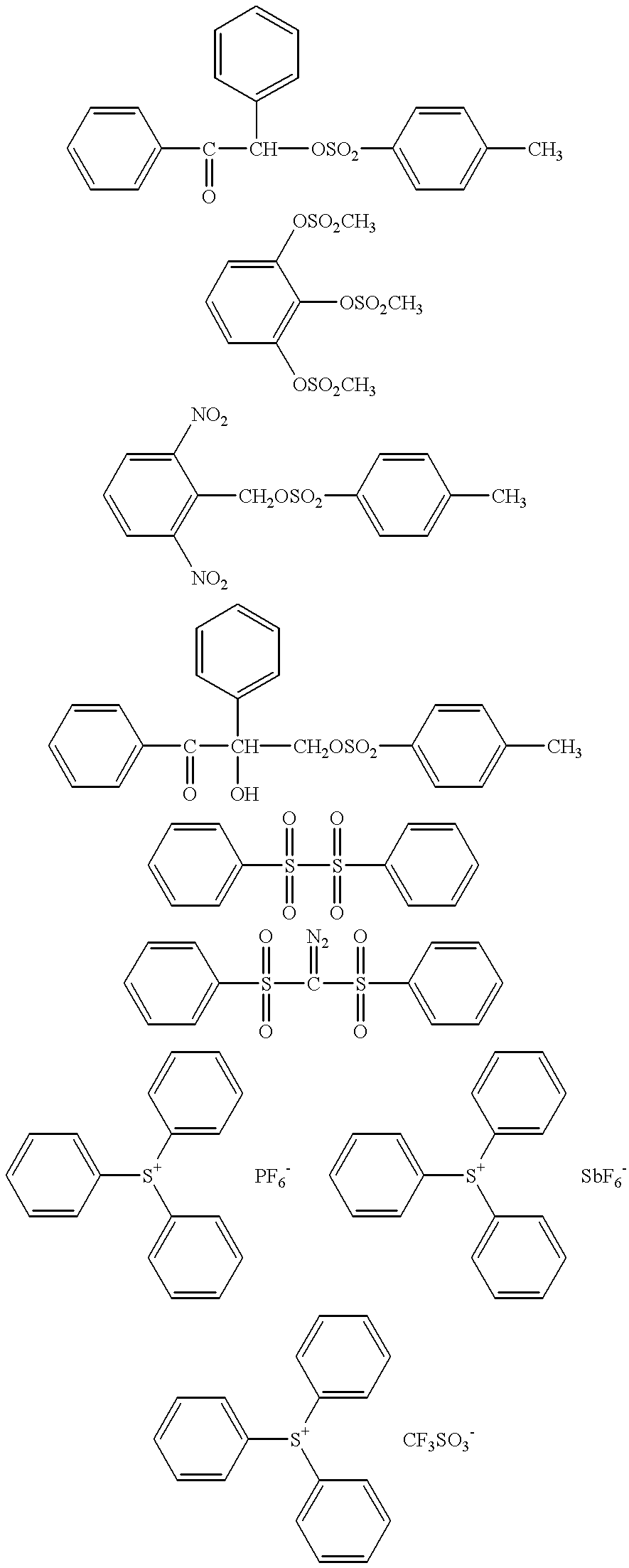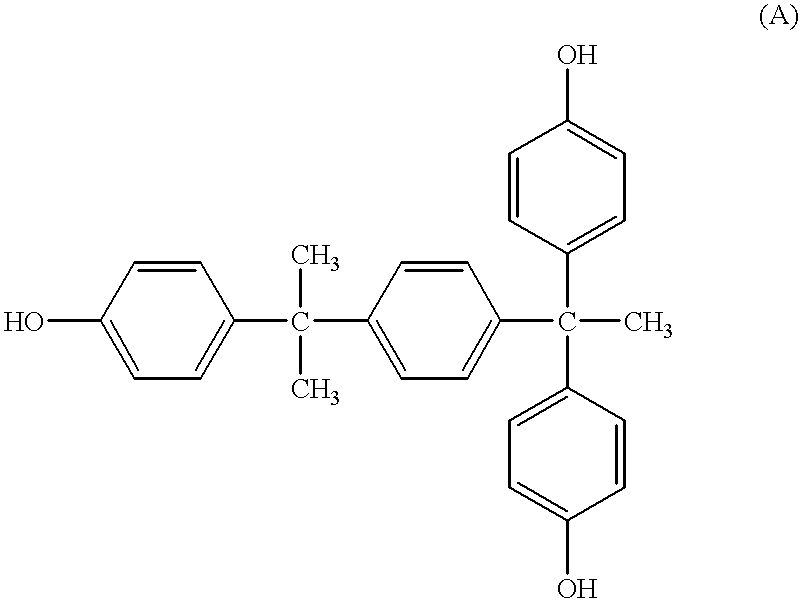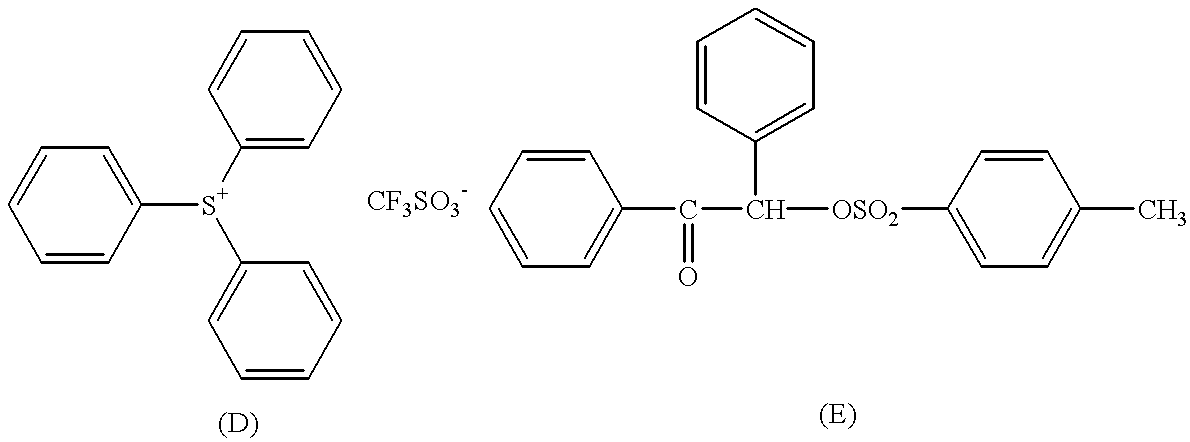Photosensitive resin composition and process for producing the same
a technology of resin composition and photosensitive resin, which is applied in the direction of photosensitive materials, instruments, photomechanical equipment, etc., can solve the problems of deterioration in sensitivity and resolution, lack of practicability of novolak resin/diazonaphthoquinone-type positive resists, and number of technical problems, so as to improve the developmentability of surface, improve the resolution, and accelerate the development of surfa
- Summary
- Abstract
- Description
- Claims
- Application Information
AI Technical Summary
Benefits of technology
Problems solved by technology
Method used
Image
Examples
examples 7 and 8
[0061] Instead of the azide compounds (B) and (C), to the positive photoresist used in Example 1 were added given amounts of an acid generator and hexamethoxymethylmelamine shown by the following formulae (D) and (E) to prepare a photosensitive resin composition. The sensitivity, resolution and .gamma.-value of the obtained photosensitive resin composition were evaluated in the same manner as in Example 1 and the results shown in Table 2 were obtained. In Table 2, the amount of the components (D) and (E) added are expressed in terms of parts by weight, relative to 100 parts by weight of the base resin.
2TABLE 2 3 Amount of Excimer laser (KrCl) Amount of acid melamine irradiation time (second) generator added added 0 1 3 5 Sensitivity Example 7 (D) 0.45 1.5 180 140 130 130 (msec) Example 8 (E) 0.45 1.5 180 120 120 130 Resolution Example 7 (D) 0.45 1.5 0.50 0.35 0.35 0.35 (.mu.m) Example 8 (E) 0.45 1.5 0.50 0.35 0.35 0.35 .gamma.-value Example 7 (D) 0.45 1.5 1.8 2.9 2.8 2.7 Example 8 (...
PUM
| Property | Measurement | Unit |
|---|---|---|
| absorption wavelength λ2 | aaaaa | aaaaa |
| absorption wavelength | aaaaa | aaaaa |
| absorption wavelength | aaaaa | aaaaa |
Abstract
Description
Claims
Application Information
 Login to View More
Login to View More - R&D
- Intellectual Property
- Life Sciences
- Materials
- Tech Scout
- Unparalleled Data Quality
- Higher Quality Content
- 60% Fewer Hallucinations
Browse by: Latest US Patents, China's latest patents, Technical Efficacy Thesaurus, Application Domain, Technology Topic, Popular Technical Reports.
© 2025 PatSnap. All rights reserved.Legal|Privacy policy|Modern Slavery Act Transparency Statement|Sitemap|About US| Contact US: help@patsnap.com



